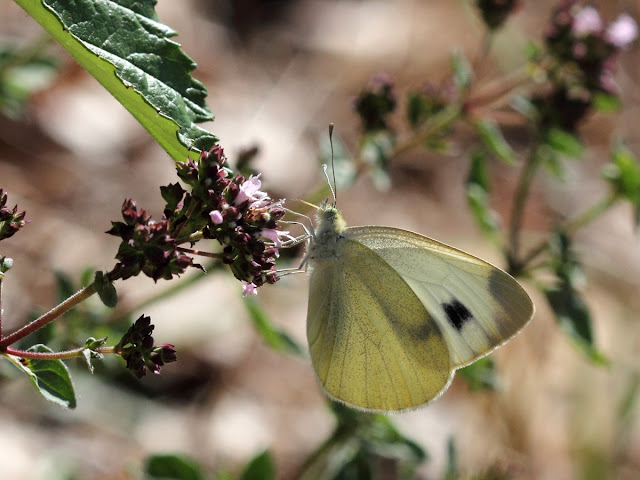When from Belgium and wanting to see a lot of butterflies in a radius of maximum a one day drive one always thinks of going south or going to the mountains but only few people think of going to our eastern neighbors, at most we drive through Germany. It was so bad that until this year I had only seen 14 butterfly species in Germany...
This year I wanted to make a change in that so I made a trip of a short week from 18-22 June to SW-Germany. Main objectives of the trip were to see some species at their closest populations to Belgium, some of them have been seen in Belgium but at least ages ago. I went from NW to SE to end up in the southern Black Forest.
Pyrgus alveus
This species has some records in Belgium but the most recent one dating back to 1938. The situation of the species in northern France is unclear to me, at least in the high Vosges it is still present. But only some 20 km east of Belgium the species is present on the calcareous grasslands of the Eifel. These grasslands are 500m+ high and in this way hold a different fauna than the lower (200-300m) calcareous grasslands of Belgium. As this seems to be a polytypic species with some cryptic diversity I really wanted to see the closest ones to Belgium.
This year I wanted to make a change in that so I made a trip of a short week from 18-22 June to SW-Germany. Main objectives of the trip were to see some species at their closest populations to Belgium, some of them have been seen in Belgium but at least ages ago. I went from NW to SE to end up in the southern Black Forest.
Pyrgus alveus
This species has some records in Belgium but the most recent one dating back to 1938. The situation of the species in northern France is unclear to me, at least in the high Vosges it is still present. But only some 20 km east of Belgium the species is present on the calcareous grasslands of the Eifel. These grasslands are 500m+ high and in this way hold a different fauna than the lower (200-300m) calcareous grasslands of Belgium. As this seems to be a polytypic species with some cryptic diversity I really wanted to see the closest ones to Belgium.
Pyrgus alveus, male
Pyrgus alveus, female
Pyrgus carthami
Along the river Nahe in the south of the plateau of the Hunsrück some high cliffs can be found with calcareous grasslands on top. These locations hold some nice species with Pyrgus carthami as the best one. Just like previous species this one has some historical records in the extreme south of Belgium, last one dating back to 1921.
Pyrgus carthami
Parnassius apollo
This species has disappeared from a lot of its former lowland locations in Europe but in the valley of the Moselle, where the river cuts deep through some high, dark reddish brown cliffs, a population of Apollo is still present. These locations are only 150-250m high so the species is already on the wing there end of May, half of June I mainly saw females.
Pieris mannii
This species is still expanding its range to the north and can even be found in natural environments (as the expansion seems to be lead through adaption to living in hotter urban gardens...). This picture, showing a female, was made along the Apollo cliffs at the Moselle valley.
Colias palaeno
In the south of the Black Forest there are still some nice bog habitats, at one of them I found no less than 4 typical bog specialties! The first one is Colias palaeno, a species once present in Belgium with the last sighting in 1956. Two attempts for reintroduction between 1959 and 1970 failed.
male
female
More soon!









Butterflies are free to fly and are so adorable. I remember that i used to run before them in order to catch them. This is a good post.
ReplyDelete